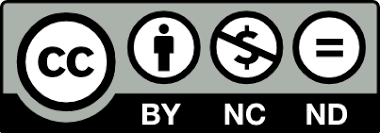Is there an association between child abuse and the versatility of self-harm methods in adolescence and early adulthood?
Published
How to Cite
Issue
Section
License
Copyright (c) 2024 Revista de Psiquiatría Infanto-Juvenil

This work is licensed under a Creative Commons Attribution-NonCommercial-NoDerivatives 4.0 International License.
DOI:
https://doi.org/10.31766/revpsij.v41n4a4Keywords:
Non-suicidal self-harm (NSSI), childhood maltreatment (CM), methods of NSSI, CM subtypesAbstract
Introduction: One of the specific risk factors most frequently associated with the development of non-suicidal self-injury (NSSI) in adolescence and early adulthood is childhood maltreatment. Objectives: First, to examine differences in the frequency and versatility (single vs. combined method) of NSSI in two groups of patients (adolescents vs. young adults). Second, to examine differences in self-reported childhood trauma experiences in two groups of patients (adolescents vs. young adults). Third, to examine differences in self-reported childhood trauma experiences in two groups of patients with NSSI according to the versatility of the self-injury method (single vs. combined method). Material and methods: 284 outpatients (86.6% women, mean age = 19.29 years, SD = 3.32) were divided into two age groups: adolescents from 12 to 18 years (n= 127; 44.7% of the total sample), and young adults aged 19-25 years (n=157; 55.3%). Results: No significant differences were found in the frequency and versatility of self-harm in the two groups of patients (adolescents vs. young people) and no differences were observed in self-reported childhood trauma experiences in the patient groups according to the versatility of the self-harm method. However, it was found that young adults reported higher scores of self-reported childhood trauma compared to adolescents. Conclusions: Future studies are needed to detect early vulnerability factors and thus improve the use of more effective psychotherapeutic interventions for the clinical management of non-suicidal self-injury.
Downloads
References
International Society for the Study of Self-injury (2018). What is self-injury? Recuperado a partir de: https://www.itriples.org/what-is-nssi
Clasificación Internacional de Enfermedades, undécima revisión (CIE-11), Organización Mundial de la Salud (OMS) 2019/2021. Recuperado a partir de: https://icd.who.int/browse11
American Psychiatric Association [APA]. Diagnostic and statistical manual of mental disorders. 5th ed. Text revision. Washington DC: American Psychiatric Publishing; 2022. DOI: https://doi.org/10.1176/appi.books.9780890425787
Kaess M, Koenig J, Bauer S, Moessner M, Fischer-Waldschmidt G, Mattern M, Herpertz SC, Resch F, Brown R, In-Albon T, Koelch M, Plener PL, Schmahl C, Edinger A. STAR Consortium. Self-injury: Treatment, Assessment, Recovery (STAR): online intervention for adolescent non-suicidal self-injury - study protocol for a randomized controlled trial. Trials. 2019 Jul 12;20(1): 425. https://doi.org/10.1186/s13063-019-3501-6 DOI: https://doi.org/10.1186/s13063-019-3501-6
Swannell SV, Martin GE, Page A, Hasking P, St John NJ. Prevalence of Nonsuicidal Self-Injury in Nonclinical Samples: Systematic Review, Meta-Analysis and Meta-Regression. Suicide and Life-Threatening Behavior. 2014 Jan 15;44(3): 273-303. https://doi.org/10.1111/sltb.12070 DOI: https://doi.org/10.1111/sltb.12070
Edinger A, Fischer-Waldschmidt G, Parzer P, Brunner R, Resch F, Kaess M. The Impact of Adverse Childhood Experiences on Therapy Outcome in Adolescents Engaging in Nonsuicidal Self-Injury. Front Psychiatry. 2020 Nov 4;11: 505661. https://doi.org/10.3389/fpsyt.2020.505661 DOI: https://doi.org/10.3389/fpsyt.2020.505661
Klonsky ED, Oltmanns TF, Turkheimer E. Deliberate self-harm in a nonclinical population: prevalence and psychological correlates. Am J Psychiatry. 2003 Aug;160(8): 1501-8. https://doi.org/10.1176/appi.ajp.160.8.1501 DOI: https://doi.org/10.1176/appi.ajp.160.8.1501
Nock MK, Prinstein MJ. A functional approach to the assessment of self-mutilative behavior. J Consult Clin Psychol. 2004 Oct;72(5): 885-90. https://doi.org/10.1037/0022-006X.72.5.885 DOI: https://doi.org/10.1037/0022-006X.72.5.885
Morales YM, Guarnero PA. Non-suicidal self-injury among adult males in a correctional setting. Issues Ment Health Nurs. 2014 Aug;35(8): 628-34. https://doi.org/10.3109/01612840.2014.927943. PMID: 25072216 DOI: https://doi.org/10.3109/01612840.2014.927943
Plener PL, Schumacher TS, Munz LM, Groschwitz RC. The longitudinal course of non-suicidal self-injury and deliberate self-harm: a systematic review of the literature. Borderline Personal Disord Emot Dysregul. 2015 Jan 30;2: 2. https://doi.org/10.1186/s40479-014-0024-3 DOI: https://doi.org/10.1186/s40479-014-0024-3
Whitlock J, Prussien K, Pietrusza C. Predictors of self-injury cessation and subsequent psychological growth: results of a probability sample survey of students in eight universities and colleges. Child Adolesc Psychiatry Ment Health. 2015 Aug 3;9: 19. https://doi.org/10.1186/s13034-015-0048-5 DOI: https://doi.org/10.1186/s13034-015-0048-5
Wilcox HC, Arria AM, Caldeira KM, Vincent KB, Pinchevsky GM, O'Grady KE. Longitudinal predictors of past-year non-suicidal self-injury and motives among college students. Psychol Med. 2012 Apr;42(4):717-26. https://doi.org/10.1017/S0033291711001814 DOI: https://doi.org/10.1017/S0033291711001814
Turner BJ, Austin SB, Chapman AL. Treating nonsuicidal self-injury: a systematic review of psychological and pharmacological interventions. Can J Psychiatry. 2014 Nov;59(11):576-85. https://doi.org/10.1177/070674371405901103 DOI: https://doi.org/10.1177/070674371405901103
Bresin K, Schoenleber M. Gender differences in the prevalence of nonsuicidal self-injury: A meta-analysis. Clin Psychol Rev. 2015 Jun;38: 55-64. https://doi.org/10.1016/j.cpr.2015.02.009 DOI: https://doi.org/10.1016/j.cpr.2015.02.009
Stanford S, Jones MP. Psychological subtyping finds pathological, impulsive, and 'normal' groups among adolescents who self-harm. J Child Psychol Psychiatry. 2009 Jul;50(7): 807-15. https://doi.org/10.1111/j.1469-7610.2009.02067.x DOI: https://doi.org/10.1111/j.1469-7610.2009.02067.x
Andrewes HE, Hulbert C, Cotton SM, Betts J, Chanen AM. Patterns of Non-Suicidal Self-Injury and Their Relationship with Suicide Attempts in Youth with Borderline Personality Disorder. Arch Suicide Res. 2018 Jul-Sep;22(3): 465-78. https://doi.org/10.1080/13811118.2017.1358226 DOI: https://doi.org/10.1080/13811118.2017.1358226
Anestis MD, Selby EA. Grit and perseverance in suicidal behavior and non-suicidal self-injury. Death Stud. 2015 Jan-Jun;39(1-5): 211-8. https://doi.org/10.1080/07481187.2014.946629 DOI: https://doi.org/10.1080/07481187.2014.946629
DiCorcia JD, Arango A, Horwitz AG, King CA. Methods and functions of non-suicidal self-injury among adolescents seeking emergency psychiatric services. Journal of Psychopathology and Behavioral Assessment. 2017;39(4): 693-704. https://doi.org/10.1007/s10862-017-9609-7 DOI: https://doi.org/10.1007/s10862-017-9609-7
Turner BJ, Layden BK, Butler SM, Chapman AL. How often, or how many ways: clarifying the relationship between non-suicidal self-injury and suicidality. Arch Suicide Res. 2013;17(4): 397-415. https://doi.org/10.1080/13811118.2013.802660 DOI: https://doi.org/10.1080/13811118.2013.802660
Halicka J, Kiejna A. Non-suicidal self-injury (NSSI) and suicidal: Criteria differentiation. Adv Clin Exp Med. 2018 Feb;27(2): 257-61. https://doi.org/10.17219/acem/66353 DOI: https://doi.org/10.17219/acem/66353
Xiao Q, Song X, Huang L, Hou D, Huang X. Global prevalence and characteristics of non-suicidal self-injury between 2010 and 2021 among a non-clinical sample of adolescents: A meta-analysis. Front Psychiatry. 2022 Aug 10;13: 912441. https://doi.org/10.3389/fpsyt.2022.912441 DOI: https://doi.org/10.3389/fpsyt.2022.912441
Muehlenkamp JJ, Xhunga N, Brausch AM. Self-injury Age of Onset: A Risk Factor for NSSI Severity and Suicidal Behavior. Arch Suicide Res. 2019 Oct-Dec;23(4): 551-63. https://doi.org/10.1080/13811118.2018.1486252 DOI: https://doi.org/10.1080/13811118.2018.1486252
Chapman AL, Gratz KL, Brown MZ. Solving the puzzle of deliberate self-harm: the experiential avoidance model. Behav Res Ther. 2006 Mar;44(3):371-94. https://doi.org/10.1016/j.brat.2005.03.005 DOI: https://doi.org/10.1016/j.brat.2005.03.005
Hasking P, Whitlock J, Voon D, Rose A. A cognitive-emotional model of NSSI: using emotion regulation and cognitive processes to explain why people self-injure. Cogn Emot. 2017 Dec;31(8): 1543-56. https://doi.org/10.1080/02699931.2016.1241219 DOI: https://doi.org/10.1080/02699931.2016.1241219
Thai TT, Jones MK, Nguyen TP, Pham TV, Bui HHT, Kim LX, Nguyen TV. The Prevalence, Correlates and Functions of Non-Suicidal Self-Injury in Vietnamese Adolescents. Psychol Res Behav Manag. 2021 Nov 27;14: 1915-27. https://doi.org/10.2147/PRBM.S339168 DOI: https://doi.org/10.2147/PRBM.S339168
Liu RT, Cheek SM, Nestor BA. Non-suicidal self-injury and life stress: A systematic meta-analysis and theoretical elaboration. Clin Psychol Rev. 2016 Jul;47: 1-14. https://doi.org/10.1016/j.cpr.2016.05.005 DOI: https://doi.org/10.1016/j.cpr.2016.05.005
Taylor PJ, Jomar K, Dhingra K, Forrester R, Shahmalak U, Dickson JM. A meta-analysis of the prevalence of different functions of non-suicidal self-injury. J Affect Disord. 2018 Feb;227: 759-69. https://doi.org/10.1016/j.jad.2017.11.073 DOI: https://doi.org/10.1016/j.jad.2017.11.073
Koenig J, Klier J, Parzer P, Santangelo P, Resch F, Ebner-Priemer U, Kaess M. High-frequency ecological momentary assessment of emotional and interpersonal states preceding and following self-injury in female adolescents. Eur Child Adolesc Psychiatry. 2021 Aug;30(8): 1299-308. https://doi.org/10.1007/s00787-020-01626-0 DOI: https://doi.org/10.1007/s00787-020-01626-0
Plener PL, Kaess M, Schmahl C, Pollak S, Fegert JM, Brown RC. Nonsuicidal Self-Injury in Adolescents. Dtsch Arztebl Int. 2018 Jan 19;115(3):23-30. https://doi.org/10.3238/arztebl.2018.0023 DOI: https://doi.org/10.3238/arztebl.2018.0023
Nock MK. Why do People Hurt Themselves? New Insights Into the Nature and Functions of Self-Injury. Curr Dir Psychol Sci. 2009 Apr 1;18(2):78-83. https://doi.org/10.1111/j.1467-8721.2009.01613.x DOI: https://doi.org/10.1111/j.1467-8721.2009.01613.x
Kaess M, Parzer P, Mattern M, Plener PL, Bifulco A, Resch F, Brunner R. Adverse childhood experiences and their impact on frequency, severity, and the individual function of non-suicidal self-injury in youth. Psychiatry Res. 2013 Apr 30;206(2-3): 265-72. https://doi.org/10.1016/j.psychres.2012.10.012 DOI: https://doi.org/10.1016/j.psychres.2012.10.012
Glenn CR, Klonsky ED. Nonsuicidal self-injury disorder: an empirical investigation in adolescent psychiatric patients. J Clin Child Adolesc Psychol. 2013;42(4): 496-507. https://doi.org/10.1080/15374416.2013.794699 DOI: https://doi.org/10.1080/15374416.2013.794699
Serafini G, Canepa G, Adavastro G, Nebbia J, Belvederi Murri M, Erbuto D, Pocai B, Fiorillo A, Pompili M, Flouri E, Amore M. The Relationship between Childhood Maltreatment and Non-Suicidal Self-Injury: A Systematic Review. Front Psychiatry. 2017 Aug 24;8: 149. https://doi.org/10.3389/fpsyt.2017.00149 DOI: https://doi.org/10.3389/fpsyt.2017.00149
Brown RC, Heines S, Witt A, Braehler E, Fegert JM, Harsch D, Plener PL. The impact of child maltreatment on non-suicidal self-injury: data from a representative sample of the general population. BMC Psychiatry. 2018 Jun 8;18(1): 181. https://doi.org/10.1186/s12888-018-1754-3 DOI: https://doi.org/10.1186/s12888-018-1754-3
Stoltenborgh M, Bakermans?Kranenburg MJ, Alink LR., van Ijzendoorn MH. The prevalence of child maltreatment across the globe: Review of a series of meta?analyses. Child Abuse Review. 2015;24(1): 37-50. https://doi.org/10.1002/car.2353 DOI: https://doi.org/10.1002/car.2353
Liu RT, Scopelliti KM, Pittman SK, Zamora AS. Childhood maltreatment and non-suicidal self-injury: a systematic review and meta-analysis. Lancet Psychiatry. 2018 Jan;5(1): 51-64. https://doi.org/10.1016/S2215-0366(17)30469-8 DOI: https://doi.org/10.1016/S2215-0366(17)30469-8
Klonsky ED, Glenn CR. Assessing the functions of non-suicidal self-injury: Psychometric properties of the Inventory of Statements About Self-injury (ISAS). J Psychopathol Behav Assess. 2009 Sep;31(3): 215-9. https://doi.org/10.1007/s10862-008-9107-z DOI: https://doi.org/10.1007/s10862-008-9107-z
Pérez S, García-Alandete J, Cañabate M, Marco JH. Confirmatory factor analysis of the Inventory of Statements About Self-injury in a Spanish clinical sample. J Clin Psychol. 2020 Jan;76(1): 102-17. https://doi.org/10.1002/jclp.22844 DOI: https://doi.org/10.1002/jclp.22844
Hernandez A, Gallardo-Pujol D, Pereda N, Arntz A, Bernstein DP, Gaviria AM, Labad A, Valero J, Gutiérrez-Zotes JA. Initial validation of the Spanish childhood trauma questionnaire-short form: factor structure, reliability and association with parenting. J Interpers Violence. 2013 May;28(7): 1498-518. https://doi.org/10.1177/0886260512468240 DOI: https://doi.org/10.1177/0886260512468240
Bernstein DP, Ahluvalia T, Pogge D, Handelsman L. Validity of the Childhood Trauma Questionnaire in an adolescent psychiatric population. J American Academy of Child and Adolescent Psychiatry, J Am Acad Child Psy. 1997; 36(3): 340-8. https://doi.org/10.1097/00004583-199703000-00012 DOI: https://doi.org/10.1097/00004583-199703000-00012
Fonseca-Pedrero E, Al-Halabí, S. Manual de psicología de la conducta suicida. Ediciones Pirámide; 2023.
Ammerman BA, Jacobucci R, McCloskey MS. Using Exploratory Data Mining to Identify Important Correlates of Nonsuicidal Self-Injury Frequency. Psychol Violence. 2018 Jul;8(4): 515-25. https://doi.org/10.1037/vio0000146 DOI: https://doi.org/10.1037/vio0000146
Marques-Feixa L, Moya-Higueras J, Romero S, Santamarina-Pérez P, San Martín-Gonzalez N, Mas A, et al. (2023). Complex post-traumatic stress disorder (CPTSD) of ICD-11 in youths with childhood maltreatment: Associations with age of exposure and clinical outcomes. Journal of affective disorders. 2023;332: 92-104. https://doi.org/10.1016/j.jad.2023.03.088 DOI: https://doi.org/10.1016/j.jad.2023.03.088
Baldwin JR, Reuben A, Newbury JB, Danese A. Agreement Between Prospective and Retrospective Measures of Childhood Maltreatment: A Systematic Review and Meta-analysis. JAMA Psychiatry. 2019 Jun 1;76(6):584-593. https://doi.org/10.1001/jamapsychiatry.2019.0097 DOI: https://doi.org/10.1001/jamapsychiatry.2019.0097
Eichenbaum H. Memory: Organization and Control. Annu Rev Psychol. 2017 Jan 3;68: 19-45. https://doi.org/10.1146/annurev-psych-010416-044131 DOI: https://doi.org/10.1146/annurev-psych-010416-044131
Nock MK, Joiner TE Jr, Gordon KH, Lloyd-Richardson E, Prinstein MJ. Non-suicidal self-injury among adolescents: diagnostic correlates and relation to suicide attempts. Psychiatry Res. 2006 Sep 30;144(1): 65-72. https://doi.org/10.1016/j.psychres.2006.05.010 DOI: https://doi.org/10.1016/j.psychres.2006.05.010
Whitlock J, Muehlenkamp J, Eckenrode J. Variation in nonsuicidal self-injury: identification and features of latent classes in a college population of emerging adults. J Clin Child Adolesc Psychol. 2008 Oct;37(4): 725-35. https://doi.org/10.1080/15374410802359734 DOI: https://doi.org/10.1080/15374410802359734
Whitlock J, Muehlenkamp J, Purington A, Eckenrode J, Barreira P, Baral Abrams G, Marchell T, Kress V, Girard K, Chin C, Knox K. Nonsuicidal self-injury in a college population: general trends and sex differences. J Am Coll Health. 2011;59(8): 691-8. https://doi.org/10.1080/07448481.2010.529626 DOI: https://doi.org/10.1080/07448481.2010.529626
Andover MS, Gibb BE. Non-suicidal self-injury, attempted suicide, and suicidal intent among psychiatric inpatients. Psychiatry Res. 2010 Jun 30;178(1): 101-5. https://doi.org/10.1016/j.psychres.2010.03.019 DOI: https://doi.org/10.1016/j.psychres.2010.03.019
You J, Leung F, Fu K, Lai CM. The prevalence of nonsuicidal self-injury and different subgroups of self-injurers in Chinese adolescents. Arch Suicide Res. 2011;15(1): 75-86. https://doi.org/10.1080/13811118.2011.540211 DOI: https://doi.org/10.1080/13811118.2011.540211
Singhal N, Bhola P, Reddi VSK, Bhaskarapillai B, Joseph S. Non-suicidal self-injury (NSSI) among emerging adults: Sub-group profiles and their clinical relevance. Psychiatry Res. 2021 Jun;300: 113877. https://doi.org/10.1016/j.psychres.2021.113877 DOI: https://doi.org/10.1016/j.psychres.2021.113877
Brager-Larsen A, Zeiner P, Mehlum L. DSM-5 Non-Suicidal Self-Injury Disorder in a Clinical Sample of Adolescents with Recurrent Self-Harm Behavior. Arch Suicide Res. 2023 Apr 4: 1-14. https://doi.org/10.1080/13811118.2023.2192767 DOI: https://doi.org/10.1080/13811118.2023.2192767
Predescu E, Sipos R. Self-Harm Behaviors, Suicide Attempts, and Suicidal Ideation in a Clinical Sample of Children and Adolescents with Psychiatric Disorders. Children (Basel). 2023 Apr 14;10(4): 725. https://doi.org/10.3390/children10040725 DOI: https://doi.org/10.3390/children10040725
Calvo N, Ferrer M, Ramos-Quiroga JA. Castell E, Nieto Z. Programa TaySH: programa de intervención psicoterapéutica para conductas autolesivas no suicidas en adolescentes y adultos jóvenes. Mayo; 2021.
Calvo N, García-González S, Perez-Galbarro C, Regales-Peco C, Lugo-Marin J, Ramos-Quiroga JA, Ferrer M. Psychotherapeutic interventions specifically developed for NSSI in adolescence: A systematic review. Eur Neuropsychopharmacol. 2022 May;58: 86-98. https://doi.org/10.1016/j.euroneuro.2022.02.009 DOI: https://doi.org/10.1016/j.euroneuro.2022.02.009









 © 2021 AEPNyA Todos los derechos reservados
© 2021 AEPNyA Todos los derechos reservados
